Explore symmetry and patterns by making fruit and vegetable stamps with your young artist. Studying fruits and veggies cut down the center will give your child a glimpse into symmetry that exists in nature. Plus, he can play with the mathematical concept of patterns by using the produce as stamps!
What You’ll Need
- Washable paint (tempera)
- Fruits and vegetables (apples, grapes, corn, oranges, peppers, mushrooms)
- Paper
- Plates
- Sharp knife
- Plastic knives
- Cutting board
Safety Tip: Parents should handle cutting larger or tougher produce like apples, oranges, peppers, and carrots. Your child will have fun cutting grapes, mushrooms, and strawberries with a plastic knife.
What to Do
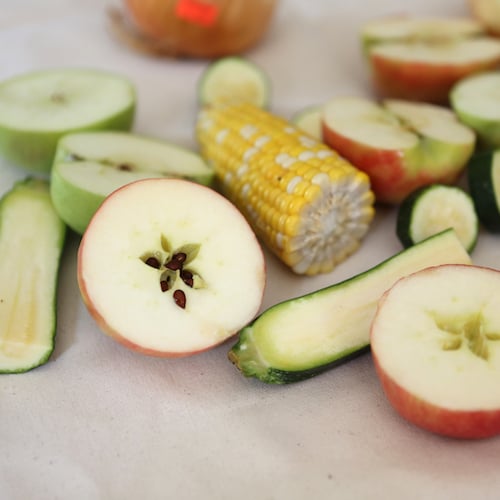
Step 1: Cut fruits and vegetables in half so that you can see seeds and shapes inside. Divide fruit vertically and horizontally, to compare. Ask your child to cut some softer fruits or vegetables the same way, using a safe plastic knife.
Step 2: Teach your young learner that if something has seeds, it’s called a fruit. If it doesn’t, it’s a vegetable. Encourage her to look for seeds and natural patterns, like star shapes, in the fruit. Can she identify which things are fruits and which are vegetables?
Step 3: Hold up two halves of an apple cut from top to bottom on the mid-line. Ask your child whether the halves of fruit are mirror images of each other. Let your child put the apple halves back together and pull them apart again.
Step 4: Hold up two halves of a second apple which has been cut horizontally through the middle. Can she describe how the apple cut from side to side looks different?
Step 5: Save some of the fruits and veggies to snack on!
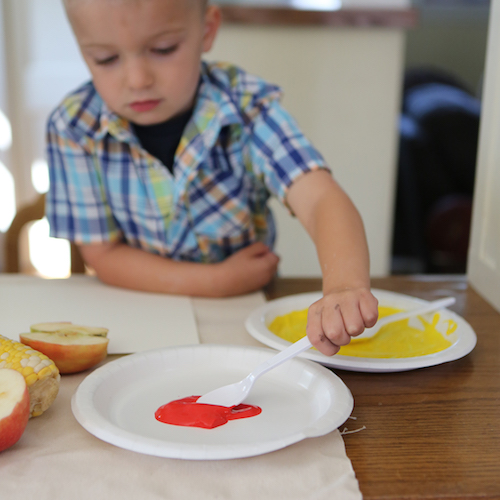
Step 6: Spread paint on several plates, so there are different colors to choose from.
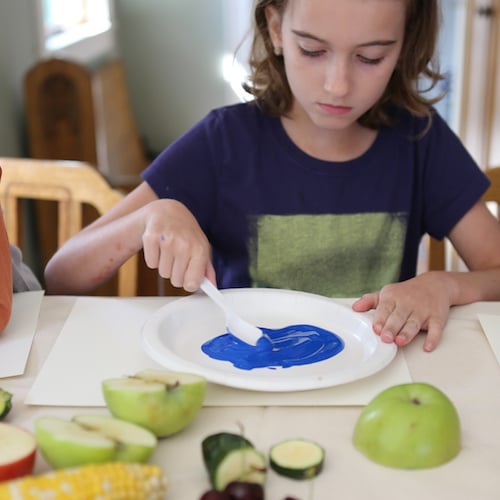
Step 7: Encourage your budding artist to dip a few interesting pieces of the cut fruit and veggies into the paint. Then use them to create prints on paper.
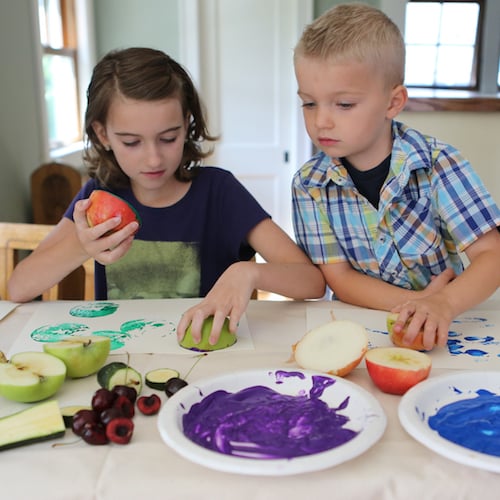
Step 8: Ask your child to create patterns. For example apple, orange, apple, orange, apple, orange, and so on.
Step 9: Let the artwork dry.
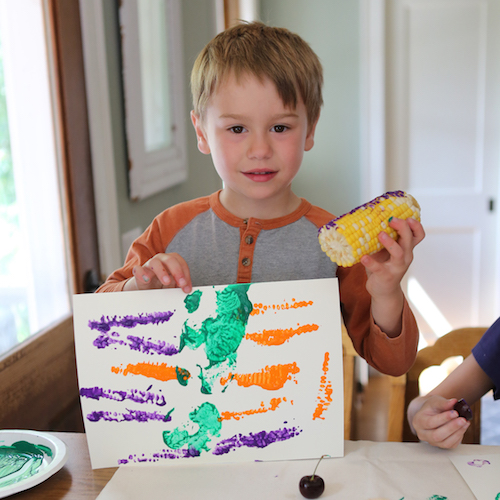
Step 10: Ask your child to identify which fruit or vegetable made which prints, based on their earlier observations.
Creative Enrichment: Encourage your child to use small, circular fruit like half a grape or blueberry to make a pointillist painting, which is a painting made of lots of dots. Look up pictures of pointillist paintings to get ideas.
The STEAM (Science, Technology, Engineering, Art, and Math) Behind the Fun
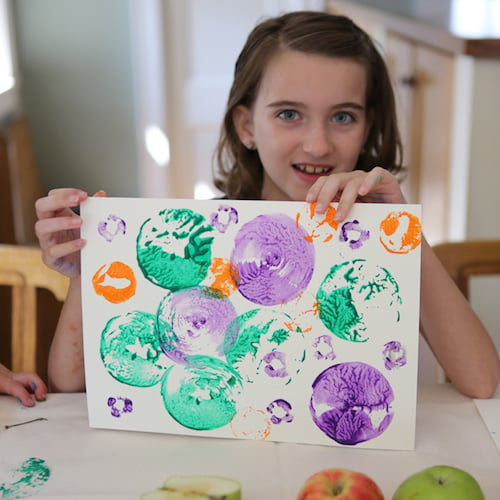
Symmetry is everywhere you look. You’ll notice it when you look in a mirror, or when you get a close-up view of a snowflake.
When you cut an apple from top to bottom, you’ll see reflectional symmetry, which means that one half of the apple is a reflection of the other half, like two sides of a butterfly.
If you cut an apple from side to side, you’ll see a different kind of symmetry called rotational symmetry. Rotation means turning, and if you spin the apple around its center, each section of the apple would look the same, like the spokes on a bicycle or the blades of a fan. Fruits have seeds and are the part of plants that develop from flowers, which are usually symmetrical. You’ll discover that many fruits display reflectional and rotational symmetry, like apples. Vegetables are plant stems, leaves, and roots and are not always symmetrical.
You can find more experiments like this one at kitchenpantryscientist.com, and in my books Kitchen Science Lab for Kids (Quarry Books), Outdoor Science Lab for Kids (Quarry Books), and my upcoming book STEAM Lab for Kids: 52 Creative Projects Exploring Science, Technology, Art and Math (available wherever books are sold).
All images are from STEAM Lab for Kids from Quarry Books, 2018. Featured Photo Credit: © Quarry Books.

